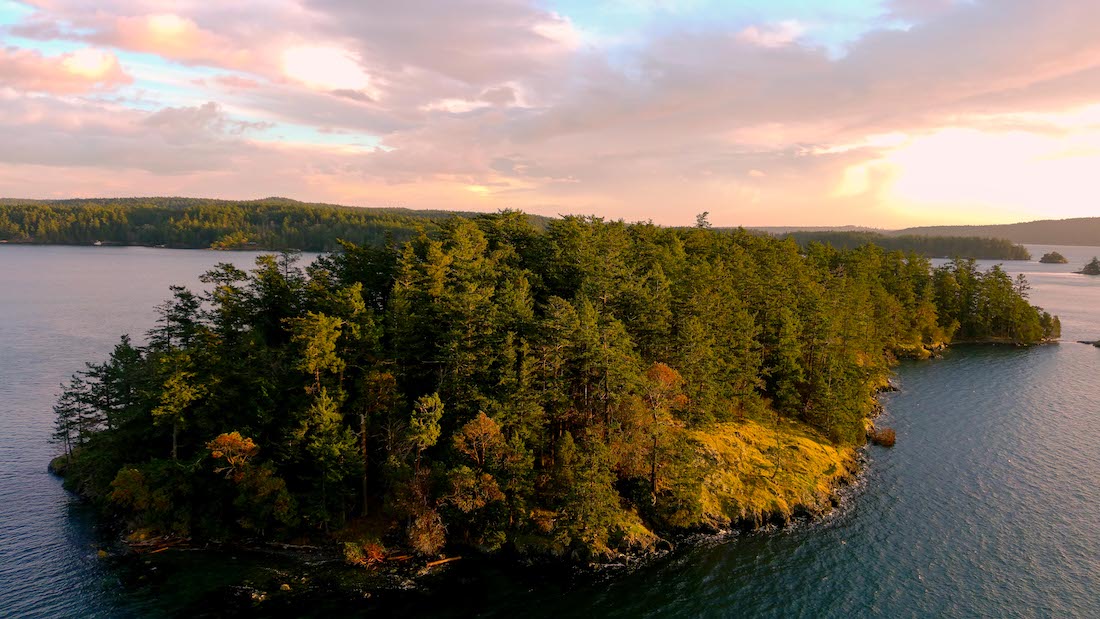Reef Island Preserve
Reef Island
Year Protected: 2020
Land Protected: 17.5 acres
Shoreline Protected: 4,960 feet
Public Benefits: Minimally developed whole island
Reef Island is heavily wooded with a rare mixed forest of Douglas fir, seaside juniper, and Garry oak. The forest is punctuated by scattered rocky balds, a small human-cleared meadow near the north end, and a tombolo on the southwest corner. The island is roughly rectangular in shape—about 500 feet across east to west and 1,500 feet north to south—and has nearly a mile of shoreline. It’s partially surrounded by rocky reefs, from which it likely got its name.
Signs of human impact on the island are minimal, but they include a few small structures that blend into the woods on the southern shore. The largest of these is a Haida-influenced cabin. It was commissioned by a previous owner and crafted in the late 1950s by the prominent Pacific Northwest wood-carving artist Dudley Carter (1891–1992). Some 20 years after Carter created the cabin with its ornate carvings, subsequent owners hired him to improve it with a floor and fireplace. They also asked Carter to build an outhouse and small bunkhouse. The Preservation Trust is investigating how best to conserve this part of the island’s cultural history.
A tiny, 0.01-acre parcel on the northern end of the island is owned by the federal government and is identified as a lighthouse reserve.
Reef Island lies just outside Deer Harbor. It’s a prominent part of the Wasp Island group, which the Preservation Trust has long regarded as a high-priority area for conservation. The preserve adds to other Preservation Trust-protected areas in the Wasp group, which include the McConnell Preserve and Thompson Conservation Easement (McConnell Island). Other nearby islands are protected by WA State Parks (Jones Island) and The Nature Conservancy (Yellow Island).
The permanent protection of Reef Island was made possible by a donation of $4 million from Malcolm Goodfellow. The island will remain private and not open to the general public. It will, however, be available on a limited basis for SJPT staff-guided tours and educational, cultural, and scientific purposes.

